Whether you’re hoping to decorate a cake, jazz up a salad, adorn a cocktail, or simply enjoy a snack from nature, edible flowers can add a touch of whimsy and natural beauty to your diet.
It’s important to remember that not every flower is edible—some are poisonous, and even the ones that aren’t may be growing in suboptimal conditions. Avoid plucking edible blooms directly from nature unless you can be sure they aren’t tainted with germs from wildlife, pathogens from the water supply, or harmful chemicals like pesticides. When in doubt, source your culinary flowers from a trusted gardener or edible flower farm to ensure quality and cleanliness.
Marigolds
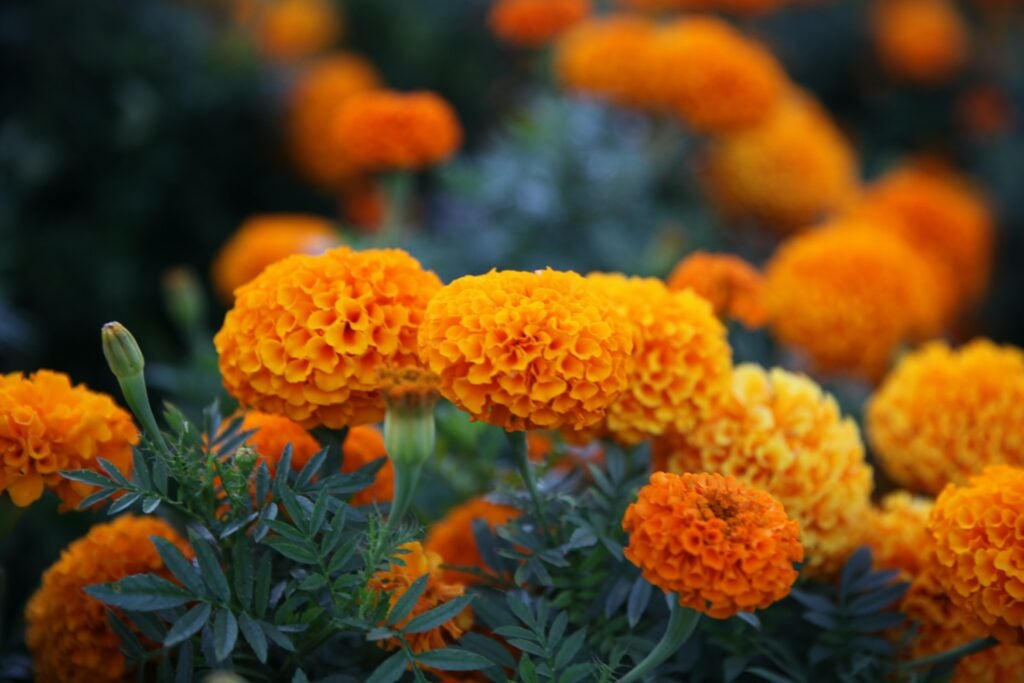
Many edible flowers can be eaten whole, but some are best disassembled to avoid the inedible sepal, pistil, and stamens—basically the base of the flower and all those funky bits in the center. Marigolds are one of these: simply separate the head from the stem and pluck off the bright petals. All varieties of marigold have edible petals, but they don’t all taste the same. Some varieties are lightly citrusy, while others have a mildly spicy kick. Still others don’t taste like much of anything and are best for aesthetic purposes rather than culinary ones. If you have access to multiple marigold varieties, consider trying them all to discover your favorites.
Use marigold petals to add color and subtle flavor to any sauce or savory pie, such as a quiche or vegetable tart. You can also roll a ball of goat cheese in these bright petals and place it atop a salad. Marigolds’ fluffy, tightly-packed petals set them apart from other garden favorites, but you can be even more certain you’ve found the right plant by looking for its distinctive fern-like leaves.
Borage
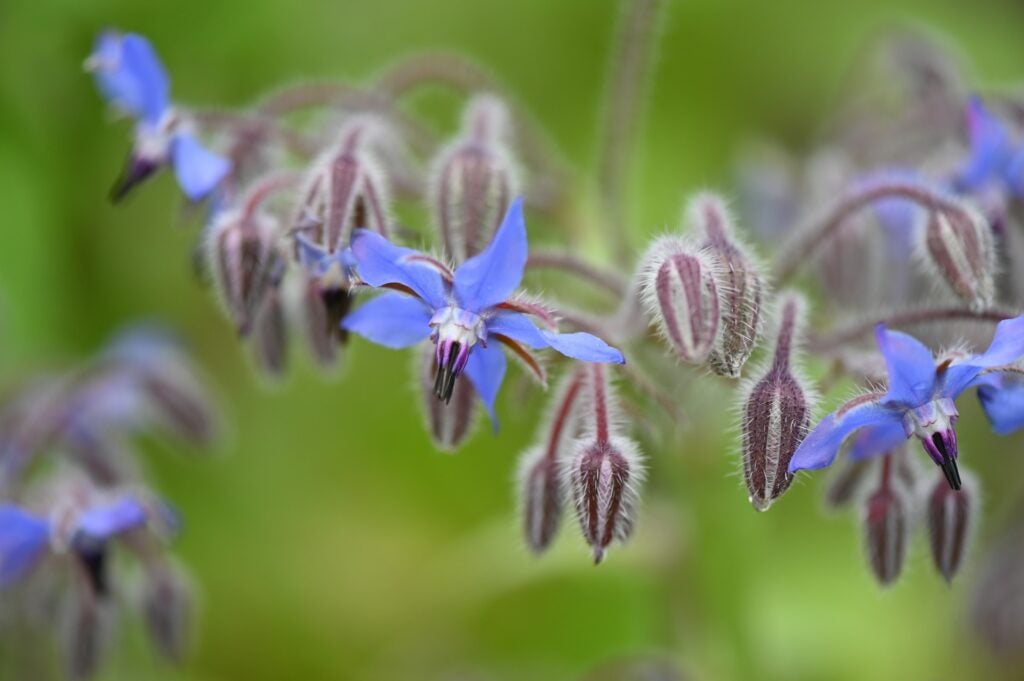
While a bit obscure, this hardy herbal plant lends itself well to a variety of culinary pursuits. It produces quarter-sized blue flowers that connoisseurs say taste a bit like cucumber. These flowers commonly end up in jellies and jams, but are a lovely addition to all sorts of dishes, from a fresh green soup to a light chimichurri for fish and poultry entrees. If you’re considering growing some yourself, don’t hesitate: this flowering herb requires almost no maintenance, will return to the garden every spring, and is a favorite of pollinating bees.
[Related: The best ways to preserve your flowers]
Identify borage by its star-shaped flowers and the prickly white fuzz coating its stems and buds. Look for flowers grouped in downward-facing clusters and wide green leaves with gently ruffled edges. Green alkanet can look similar to the untrained eye, but its flowers are purple with rounded petals and have thicker stems than borage. Forget-me-nots may also be mistaken for borage, but they lack its signature fuzz. Both these other flowers are technically also edible, but they don’t taste like much of anything.
Pansies
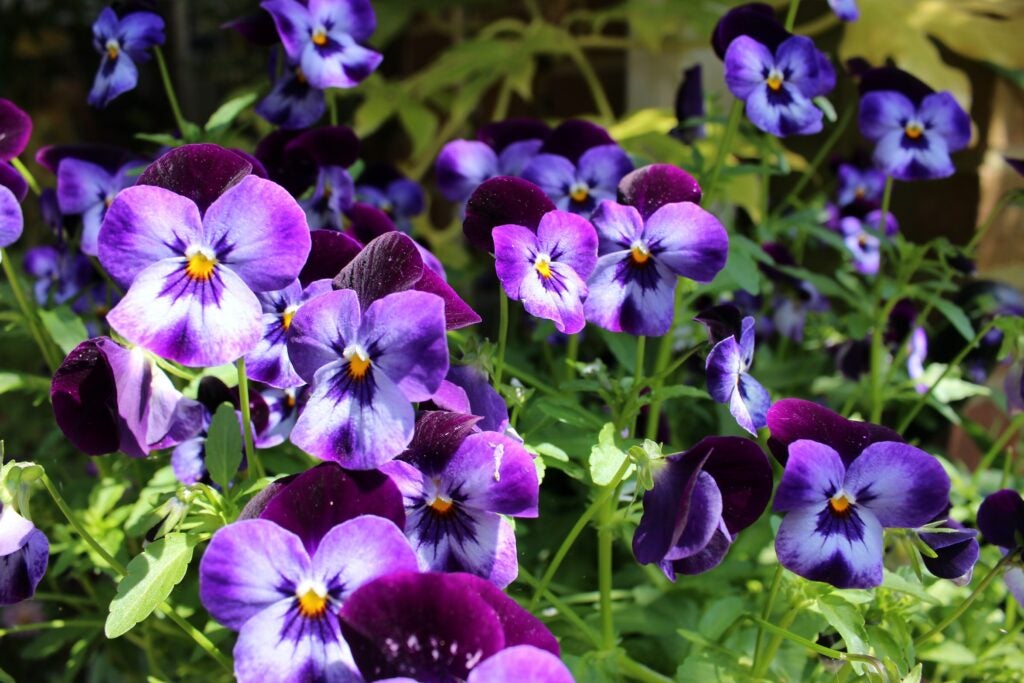
A favorite of edible flower enthusiasts, pansies come in a huge array of colors, from soft pastels to vibrant jewel tones. Stick them on a cake, garnish a salad, or pop them in your favorite cocktail—they’ll add an enticing hue wherever they end up. On their own, they have a mild “green” flavor a bit like lettuce, but they’re also a favorite of dessert lovers for their wide variety of colors and flat, round shape. You can easily preserve the fresh blooms by brushing them with an egg wash and sprinkling them with superfine granulated sugar (or regular granulated sugar if that’s all you have), then leaving them to dry completely for four to 24 hours. These candied pansies can make a stunning dessert garnish or a unique homemade gift.
Pansies have iconic flat faces in watercolor hues that make them hard to miss. The flowers bloom in the spring and early summer months on short, compact plants with dark green leaves. They’re a favorite of cool-weather gardeners, and you’ll often find them in public parks, window boxes, and decorative planters—although those aren’t the best places to browse for a snack.
Roses
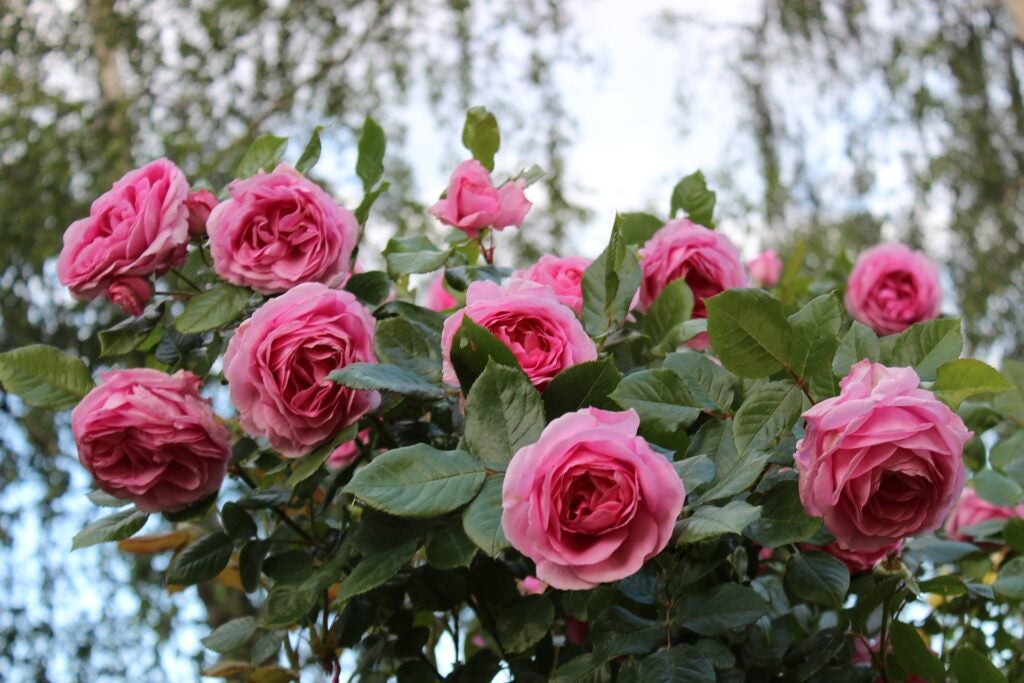
Roses have been lauded throughout history for their aesthetic beauty, but they have a unique floral flavor in addition to show-stopping colors. This is another flower where you’ll want to stick to the petals, and be sure to rip off the white portion at the base of each petal to avoid its bitter taste. Rose petals can be chopped and blended with softened butter for a fancy teatime spread, dried and sprinkled on a latte for a cute treat, or infused into honeys, jams, jellies, and baked goods.
You probably know what a rose looks like, but it’s worthwhile to make sure you’ve correctly spotted one before chowing down. Look for a bell-shaped bloom with tightly rolled central petals and a stem covered in signature thorns to make sure you’ve found a rose. One of the most similar plants is the thorn-free ranunculus, which is poisonous when eaten fresh.
Tuberous begonias

If you can get your hands on some of these big, bright blooms, take advantage of their natural citrusy flavor. Pair the softball-sized flowers with sliced strawberries in a summery salad or perch one on top of a fruit smoothie for an edible decoration. You can also substitute the stems of tuberous begonias for rhubarb in pies and other baked goods due to their similar sour flavor.
[Related: How to keep your flower arrangements gorgeous for as long as possible]
Be sure to get your tuberous begonias from a reputable source—not all begonias are edible, and you don’t want to end up with the wrong variety on your plate by mistake. Tuberous begonias are large and fleshy, unlike some of their smaller cousins, but this is a flower you really shouldn’t try to identify by yourself: check the label or ask their grower directly. People with gout, kidney stones, or rheumatism should avoid even the edible ones: the flowers’ oxalic acid may interfere with the body’s ability to properly absorb nutrients.
Nasturtium
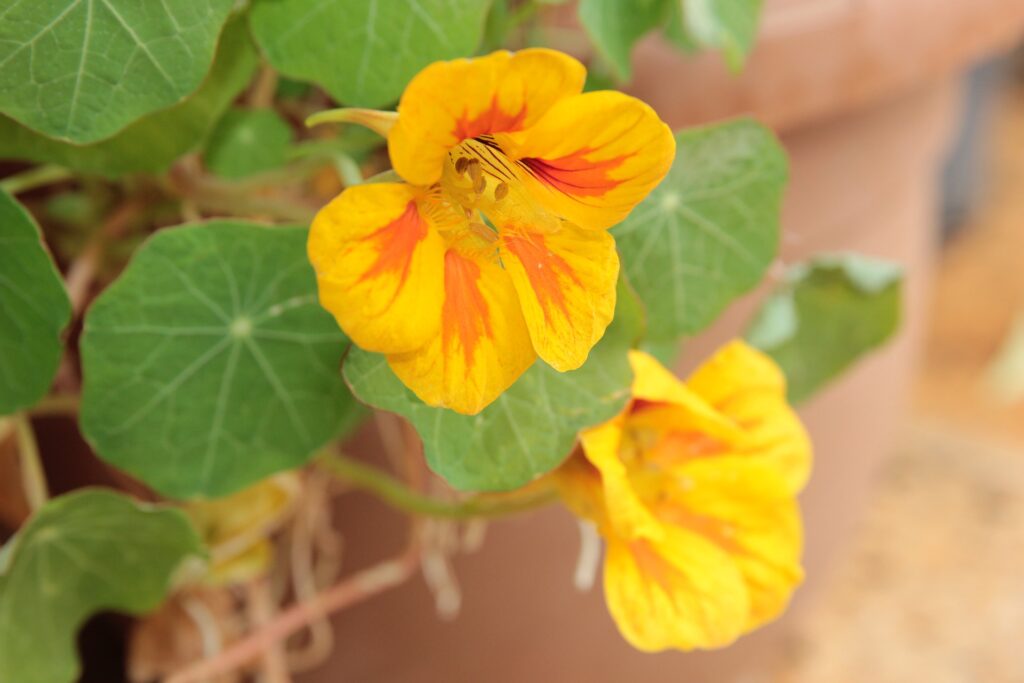
The flowers, buds, and leaves of nasturtium plants are all safe to eat, and they have a peppery bite that sets them apart from other edible blooms. Try adding the flowers to a salad or using them to decorate an appetizer. This plant is an annual, meaning it won’t grow back year after year—just another reason to take advantage of the flowers while they’re in bloom.
If the bright orange flowers with darker orange and red streaks in the centers don’t tip you off, nasturtium also has distinctive leaves. Round and delicate, these bright green saucers have veins that fan out from a small white center. You can often find these flowers and their leaves growing in clusters on thin, roaming stems.
Squash blossoms

A favorite of chefs and home cooks alike, you may not have to look far to find edible squash blossoms. Some high-end grocery stores carry these crinkly treats, as do many farmers markets that sell squash in the fall. Because these flowers grow on the roaming stems of squash plants, you’re unlikely to find them out in the wild.
These trumpet-like orange blooms can grow up to 7 inches long and are delicious stuffed with ricotta cheese, coated in breadcrumbs or pretzel dust, and fried in a pan. You can also cook them into a creamy soup, or even use them as the filling for a quesadilla. The size of these fluted flowers make them much more than a garnish—they’re an ingredient in their own right.




